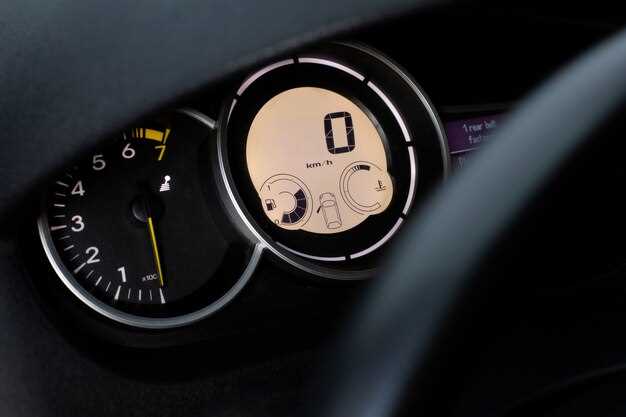
Adaptive cruise control (ACC) is a remarkable technological feature that enhances the driving experience in Toyota vehicles. By ingeniously combining traditional cruise control with advanced sensor technology, ACC allows drivers to maintain a consistent speed while automatically adjusting to the traffic conditions around them. This system not only helps to reduce driver fatigue during long journeys but also increases safety by responding to the behavior of vehicles ahead.
The adaptive nature of ACC is what sets it apart from standard cruise control systems. Using radar and cameras, the system monitors the distance between your vehicle and the one in front. If traffic slows down or if there is a need to decelerate, ACC seamlessly reduces speed and can even bring the vehicle to a complete stop. Once the road ahead is clear, it subtly accelerates back to the preset cruising speed, all without requiring the driver’s constant input.
In Toyota models, the integration of adaptive cruise control exemplifies the brand’s commitment to innovation and safety. Features like lane departure alerts and pre-collision systems work in harmony with ACC to create a more cohesive driving environment. Understanding how to utilize these features can significantly enhance your driving capabilities, making every journey not just more enjoyable, but also safer.
How Adaptive Cruise Control Manages Speed and Distance
Adaptive Cruise Control (ACC) is a sophisticated system designed to enhance driving safety and convenience by automatically adjusting the vehicle’s speed. Unlike traditional cruise control, which maintains a set speed regardless of traffic conditions, ACC continuously monitors the distance to the vehicle ahead and modifies speed accordingly.
The system relies on a combination of sensors, including radar and cameras, to detect the presence of cars in front. When ACC is activated, the driver sets a desired speed and a following distance. The sensors then track the speed of the vehicle ahead, allowing ACC to maintain a safe space between both vehicles. If the car in front slows down, ACC automatically reduces the speed of the Toyota, ensuring that it never gets too close to the lead vehicle, thereby minimizing the risk of collisions.
When the road clears or the vehicle in front speeds up, ACC will gradually accelerate back to the pre-set speed, ensuring a smooth driving experience. This smart adjustment of speed not only enhances safety but also contributes to a more relaxed driving environment, allowing drivers to focus on the road and their surroundings without constantly adjusting the throttle or brakes.
In addition to providing convenience, ACC systems are equipped with safety features such as emergency braking. If a sudden obstacle appears, the system can engage the brakes automatically to prevent a potential accident. Overall, Adaptive Cruise Control significantly optimizes driving dynamics while prioritizing safety and reducing driver fatigue on long journeys.
Key Safety Features Included in Toyota’s Adaptive Cruise Control

Toyota’s Adaptive Cruise Control (ACC) is equipped with several key safety features designed to enhance the driving experience while ensuring the well-being of occupants. One of the primary features is the Forward Collision Warning, which alerts drivers when a potential collision with a vehicle or obstacle ahead is detected. This proactive measure encourages drivers to take necessary action to avoid accidents.
Another significant feature is the Dynamic Radar Cruise Control, which automatically adjusts the vehicle’s speed to maintain a safe following distance from the car in front. This intelligent system utilizes radar and cameras to continuously monitor traffic conditions, ensuring that the vehicle slows down and accelerates smoothly in response to other vehicles on the road.
The Lane Departure Alert is also integrated within the adaptive cruise system. This feature provides visual and audible alerts if the vehicle unintentionally drifts out of its designated lane, promoting safer driving and minimizing the risk of side-swipe collisions. Additionally, the Lane Tracing Assist can automatically steer the vehicle back into the lane if it detects unintentional lane departure, adding an extra layer of safety.
Furthermore, Toyota’s ACC incorporates a Pre-Collision System, which uses advanced technology to identify potential frontal collisions and, if necessary, can apply the brakes to mitigate the severity of a collision. This combination of features not only enhances the safety of adaptive cruise control but also contributes to overall road safety.
Finally, the system is designed to function seamlessly in various driving conditions, providing drivers with peace of mind during highway travel and in heavy traffic situations. Ultimately, Toyota’s Adaptive Cruise Control prioritizes safety by ensuring that drivers can enjoy the benefits of cruise control while minimizing risks on the road.
Common Misconceptions About Using Adaptive Cruise Control Safely

One of the most prevalent misconceptions about adaptive cruise control (ACC) is that it can fully replace the driver’s attention. While ACC significantly enhances driving convenience by automatically adjusting the vehicle’s speed to maintain a safe distance from the car in front, it does not eliminate the need for active supervision. Drivers must remain alert, as the system cannot respond to all road situations, such as sudden obstacles or complex traffic patterns.
Another common misunderstanding is that adaptive cruise control is a form of self-driving technology. Many believe that once engaged, they can take their hands off the wheel entirely. However, ACC requires the driver to keep their hands on the steering wheel and be prepared to take control of the vehicle at any moment. This safety precaution ensures that drivers are ready to react to unexpected events that the technology may not handle appropriately.
Some users think that adaptive cruise control is only beneficial on highways. While it excels in highway conditions, ACC can also enhance safety in city driving, especially in stop-and-go traffic. The system can adjust speed seamlessly and reduce the need for constant acceleration and braking, which can lead to a more relaxed driving experience. However, it is vital to understand its limitations in urban environments, where frequent stops are unavoidable.
Lastly, there’s a belief that using ACC means you can surpass speed limits safely. This is misleading; adaptive cruise control will not exceed the set speed limit or adjust to new speed limits unless manually programmed by the driver. It is essential for drivers to comply with road regulations and ensure that their speed settings are appropriate for current driving conditions.




